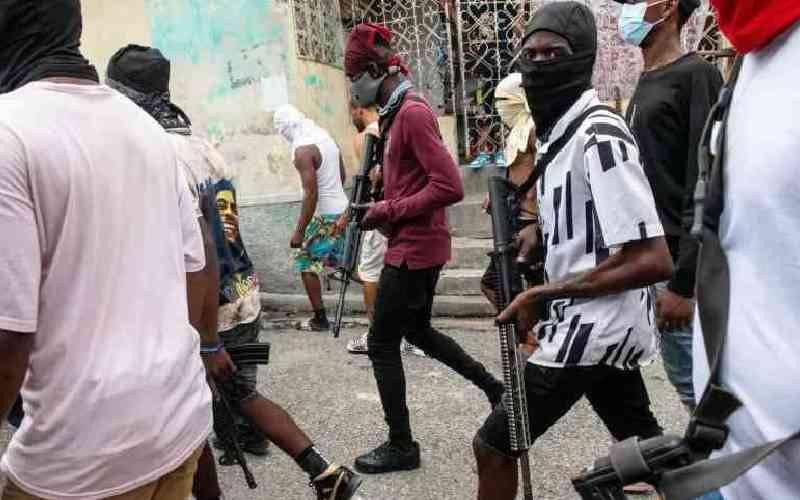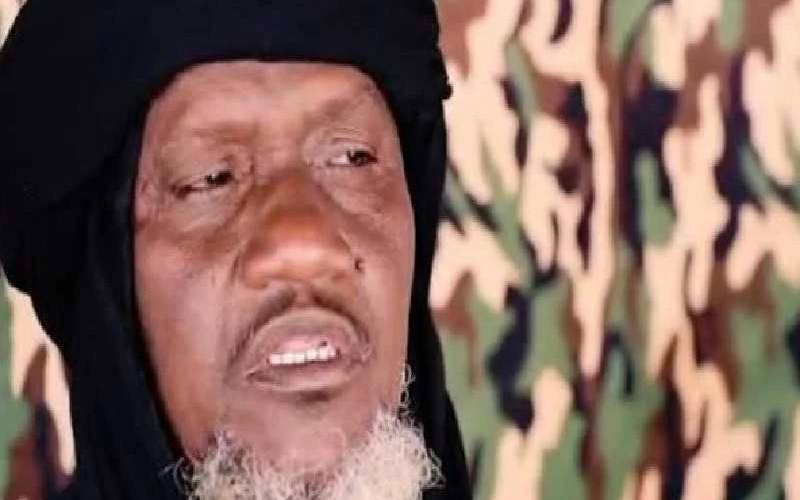The intrigues surrounding President Uhuru Kenyatta’s mid-air about turn from a diary appearance at a US investment conference has put his handlers on the radar with the official explanation creating more uncertainty over the true events of that night.
Leaders from across the political divide have also pointed out and hinted at a possible laxity in the manner in which the aborted trip was handled.
“There must be proper and thorough checks to ensure the entire route is safe and sound before the presidential jet takes off. Of the practice I know, the Head of State should even have notified his counterparts that he will be over-flying their airspace because he is required to send them goodwill messages when airborne,” CORD co-principal and one time Kenya’s Foreign Affairs minister Moses Wetang’ula said.
Mr Wetangula, also the Senate Minority leader, noted the lapse shows continuing nightmares of security challenges which now even expose the President to danger due to acts of commission and omission by his handlers.
Flight path
Officially, the President’s jet returned to JKIA almost 5 hours after taking off as a result of “increased military activity over Yemen” which lies just under one flight path to Dubai, from where Uhuru was to take a connecting flight to the US.
The global aviation industry was already taking precaution to avoid the Sanaa airspace even before the Thursday flight. Yemen has on numerous occasions announced the closure of its air space.
Yemen took the decision in the wake of the civil war that has erupted in the region, and the start of an aerial bombing campaign by a Saudi Arabian-led Arab coalition to target Houthi Shiite rebels and support Yemen’s President.
At least three airlines – Emirates, Etihad and Air Seychelles – have officially rerouted flights to Dubai through a longer route. For instance, from Dubai, the three airlines now have to make a detour by flying towards the Arabian Sea and Indian Ocean using Muscat and Bombay airspace instead of flying over the Sanaa airspace.
Hundreds of flights using the Yemeni airspace to access the Indian Ocean region as well as large parts of Africa from the Gulf area, including services to and from Europe, have also to take longer routes.
Reports from the Middle East indicate a Kenyan civilian airplane was last week forced to land at King Abdullah airport in Jizan region of Southern Saudi Arabia.
It is not clear whether the April 16 incident had any material relevance to the President’s misfortune over Yemen on Friday but the Arabic version of the April 17 edition of the Asharq al Awsat newspaper reports that combat aircraft forced a Kenyan civilian plane to land in the Jizan region. It refers to “coalition forces” ordering the “Kenyan plane” to land in Jizan but it is not clear what violation the aircraft had committed or what it was doing in or towards Yemen airspace which is now under control of Saudi-led Middle East Sunni nations fighting Shia Houthi rebels that have overrun Yemen’s main town since January and ousted President Aboud Rabu Mansur Hadi.
Under the headline, ‘Coalition Forces order Kenyan plane to land in Jizan’, the story further quotes the coalition of the so-called Operation Decisive Storm or (Asafa al Hazima in Arabic) confirming that “combat aircraft forced a field plane to land in King Abdullah Airport in Jizan region”.
The United States Federal Aviation Association through a notice to its airmen prohibits flights over the Sanaa airspace. “All flight operations in the Sanaa flight information region are prohibited until further advised due to the potentially hazardous situation created by the risks to civil aviation from ongoing military operations, political instability, violence from competing armed groups and the continuing terrorism threats from extremist elements,” reads a statement from the association’s website.
Further, the association also says in the statement that aircraft operating to and from Yemeni airports are at risk from terrorist and militant groups potentially employing anti-aircraft weapons, including Man-Portable Air Defense Systems (MANPADS), small-arms fire, and indirect fire from mortars and rockets. “Due to the fighting and instability, there is a risk of possible loss of state control over more advanced anti-aircraft weapons to terrorist and militant groups,” reads the report.
Stay informed. Subscribe to our newsletter
Some of these weapons have the capability to target aircraft during their approach and departure phases of flight and at higher altitudes. Attacks against aircraft in-flight or Yemeni airports can occur with little or no warning.
The notice by the American organisation was issued on April 8, 2015, nearly two weeks before the botched trip to America by President Kenyatta. With this time difference, and commercial carriers diverting flights long before this warning, how is it that President Kenyatta’s plane still had the intention of flying over Yemeni air space? The state’s official line remains that the flight turned as a result “increased military activity in Yemen”.
“It is simple, the flight plan should have been pre-checked early enough. How can a presidential jet over-fly a war zone? Such errors should not be repeated... the President should decide who will take responsibility for such an error,” former Deputy Prime Minister Musalia Mudavadi said.
However, on realisation of this fact, questions arise over why the presidential jet route was not reschedule, for example land in Addis Ababa and take a direct flight to the US? Why was the trip not rescheduled?
Was the function of such a small magnitude that it could be erased from the President’s diary as a result of botched travel arrangements?
“The decision to turn the plane back to Nairobi was the right one. The President’s security comes first. Of course such a thing should not happen again and as we speak, the President is ably represented at the conference by the Foreign Affairs Cabinet Secretary,” leader of Majority in Parliament Adan Duale said.
Critical matter
Terming the incident a very serious matter, chairman of Council of Governors Isaac Ruto accused the President’s handlers of mishandling him. “They are running the President’s affairs in a very jua kali (casual) way. How do we trust such fellows to be the guiders and guardians of our President?” asked Ruto.
Arguing the presidential jet is only meant for domestic flights, the Bomet Governor advised the President to instead use reliable airlines for international trips.
“His handlers should only fly him in the presidential jet up to where the local East African time ends. Any experiments beyond that coverage is dangerous as the pilots risk taking our President even to the ocean,” he said.
President Kenyatta was meant to participate in the annual Milken Institute Global Conference in Los Angeles. The institute describes itself as a “nonprofit, nonpartisan think tank determined to increase global prosperity by advancing collaborative solutions that widen access to capital, create jobs and improve health”.
Among the listed speakers for the two-day conference is Rwanda’s Paul Kagame, who has attended the last two conferences.
 The Standard Group Plc is a
multi-media organization with investments in media platforms spanning newspaper
print operations, television, radio broadcasting, digital and online services. The
Standard Group is recognized as a leading multi-media house in Kenya with a key
influence in matters of national and international interest.
The Standard Group Plc is a
multi-media organization with investments in media platforms spanning newspaper
print operations, television, radio broadcasting, digital and online services. The
Standard Group is recognized as a leading multi-media house in Kenya with a key
influence in matters of national and international interest.
 The Standard Group Plc is a
multi-media organization with investments in media platforms spanning newspaper
print operations, television, radio broadcasting, digital and online services. The
Standard Group is recognized as a leading multi-media house in Kenya with a key
influence in matters of national and international interest.
The Standard Group Plc is a
multi-media organization with investments in media platforms spanning newspaper
print operations, television, radio broadcasting, digital and online services. The
Standard Group is recognized as a leading multi-media house in Kenya with a key
influence in matters of national and international interest.








